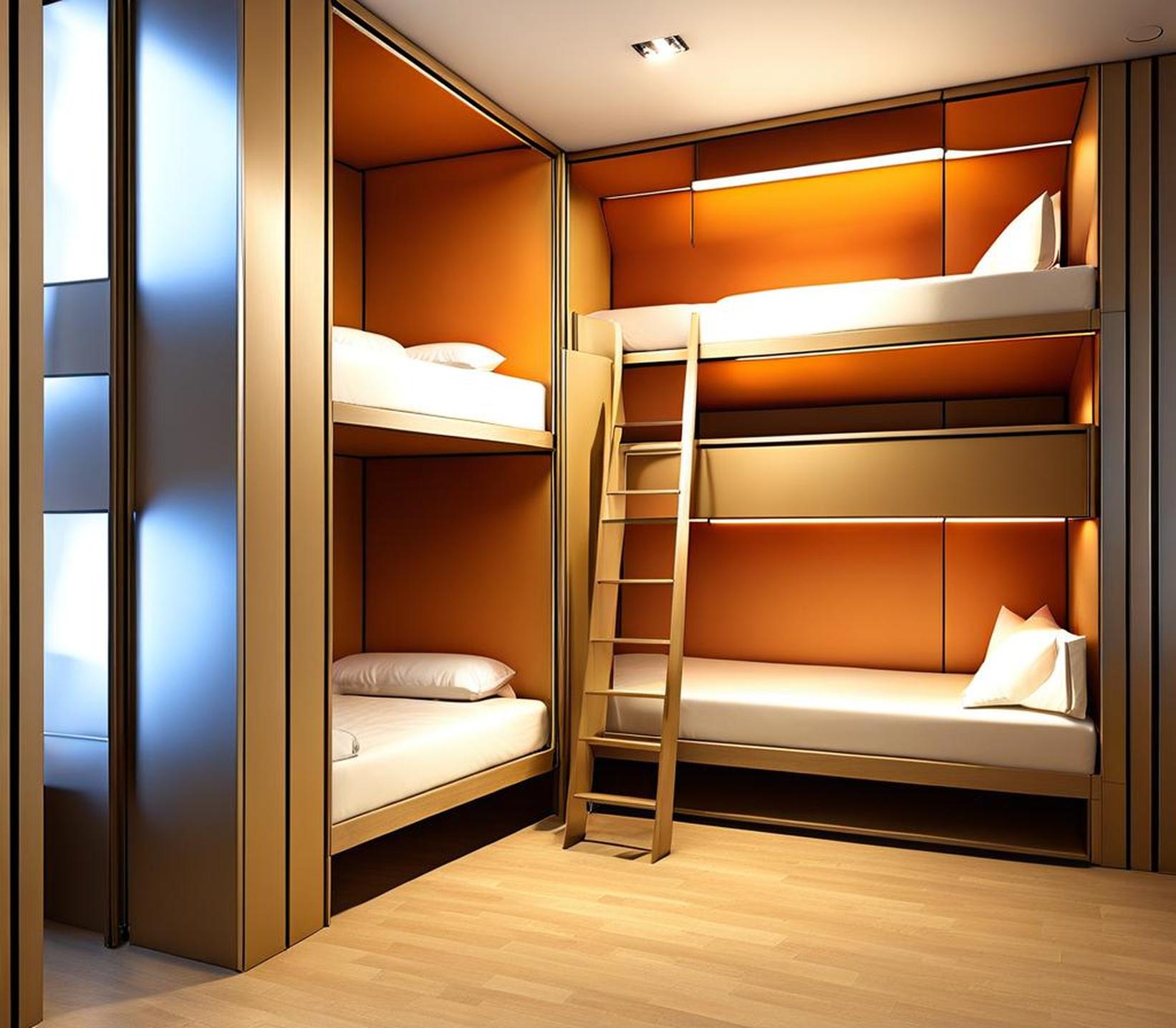Cramped homes and blended families often require creative solutions for carving out privacy within shared bedrooms. Rather than completely dividing open spaces with permanent walls, L-shaped bunk beds present a versatile option for flexible room separation. With reinforced framing and extended divider panels, these bunks foster personal nooks for siblings or housemates of any age.
L-shaped bunk bed dividers allow you to section off part of a bedroom without sacrificing valuable square footage. The divider component can be customized with walls, curtains, or screens to meet each resident’s needs. By utilizing the vertical space, under-bed areas become perfect for extra storage, workstations, or lounging. We’ll explore how to maximize both floorplan and functionality with this unique bunk configuration.
L-Shaped Bunk Bed Dividers Explained
Unlike traditional back-to-back bunks, L-shaped dividers occupy a single corner, with one bed running perpendicular to the other. One side of the divider extends outward, transforming the beds into a partition that segments the room. The length and position of this divider can vary.
A basic L-layout places twin or full beds at a 90-degree angle. For more separation, extend to a longer twin, full, or queen bed running parallel to the wall. Widening and lengthening the divider adds more privacy. Typically, these dividers run 5-10 feet long, with 8 feet as ideal for framing a cozy personal niche. Metal and wood frames both work well for sturdy, reinforced structures that handle the divider’s weight.
Maximizing Your Space
One great advantage of L-bunk dividers over typical configurations is their adaptability for filling out the footprint of your unique bedroom. Take advantage of angled alcoves, sloped ceilings, knee walls, and awkward dimensions to carve out divided sleeping spaces.

The recessed area under the top bunk presents the perfect opportunity for personalized, built-in amenities to save floor space. Incorporate drawers, closets, lofted play areas, or desks to multiply usable square footage. Extend storage along the divider section itself with cabinets, shelves, and panels sigh hanging racks for clothes and gear.
Customizing the Divider Section
An L-shaped bunk divider bed allows for numerous options when designing the visual separation itself. Enclose the entire divider with floor-to-ceiling walls for a completely isolated nook. A partial wall or railing maintains openness while delineating spaces. For more flexibility, hang blackout curtains, install sliding screens or shutters, or attach a removable room partition.
Consider easy passage between sides, if desired. Built-in doors with latches or sliding barn-style doors enable foot traffic without sacrificing sound buffering. Cubby holes, transparent mesh panels, or half-wall railings also permit social interaction. Make the divider section work double duty with tack boards, gear storage, twin closets, or bookshelves built right in.
Structural Considerations
While aesthetically similar to standard bunks, L-shaped dividers require enhanced structural integrity. Significantly greater weight-bearing strength and reinforced connections support the span and storage load of divider extensions. Bolting to multiple studs or floor anchors may be necessary to stabilize the entire unit.
Fortunately, many bunk bed providers offer custom L-shaped dividers as an integrated solution. These combine sturdy steel or solid hardwood frames with divider walls as a singular, freestanding piece of bedroom furniture. Prefabricated divider beds simplify installation without compromising safety.
Choosing Materials
The material composition of your L-bunk divider bed impacts both form and function. Powder-coated steel lends industrial chic with high durability and easier cleaning. Solid wood exudes warmth and easily accepts colorful stains. Wood composites like laminates balance affordability and versatility.
Bedrooms share sound as well as space. Acoustically absorbent fabrics and insulation within divider walls and panels reduce unwanted noise transfer. Cork, wool, and felt effectively dampen vibration and soften echoes. White noise machines or ambient music devices further mask bleed-through sounds.
Bedding Logistics to Fit Divided Space
Finding the right bed sizes and configurations lets you modify individual comfort within the divided room. Staggered heights – full loft atop twin lower – afford more play space underneath. Place mattresses back-to-back to double as sound buffer and crowding solution.
Trundle beds and underbed drawers maintain bonus storage space while sliding neatly out of sight. For ultra-adaptive rooms, install bunks with adjustable height posts and customizable ladder placement. This flexibility continues into bedding needs. Opt for fitted sheets with elastic corners, drawer-style bases to hide disheveled bedding, and shared bedding supplies in under-bed containers.
Creative Room Layout Ideas
Even within existing bedrooms, an L-shaped bunk divider enables you to rethink room organization. Zone spaces by activity with bunk entry points aligning with play area, study niche, etc. Balance natural light exposure so each section enjoys refreshing views and adequate ambient illumination.
For housemates with greater age differences, position the divider bunk longitudinally to establish one large and one small sub-room, rather than hemmed-in corner spaces. Include a hallway-style opening to connect while defining personal quarters. Repurpose adjacent closets or knock out non-load-bearing walls to incorporate more built-ins.
Budget Breakdown
Bringing home a divided bunk runs $800-$2500+ for off-the-shelf models, with custom fabrication costing more. Component pricing gives a realistic budget baseline.
A bare-bones L-shaped metal frame with an unsupported 8-foot divider starts around $800. Adding finished divider walls with standard twin mattresses raises cost to $1200-1500. Integrated storage, electrical, luxury mattresses, and specialty ladders provide premium options from $1800 up. Maximize value by selecting extendable divider length and convertible bed sizes to adapt through years of use.
For families and housemates lacking square footage, L-shaped divider bunks foster shared bedrooms with personal space. Customizable divider walls balance visibility and independence. Built-in storage solutions multiply usable area while keeping clutter contained. Reinforced and flexible configurations stand up to everyday use across ages. Let bunk divider beds save harmony along with space in your home environment.
